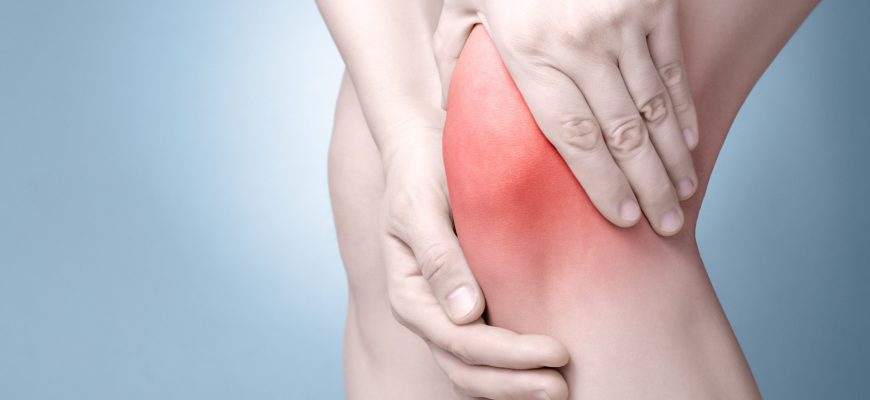
When most people think of disease, diabetes, hypertension, or respiratory conditions come to mind as the top disabling conditions, right? Well, of course, yes. But the degenerative joint disease also deserves a spot in this group. Wondering why we are saying this or how to treat it? Remember that there are several ways to treat the degenerative joint disease knees suffer from, including lifestyle modifications, medication, and potential surgery to help manage the condition and improve mobility.
Do your knees hurt any time you try to move or walk? Do your fingers burn with every motion? Is the pain you feel in your limbs or your back debilitating to the point when you feel like you can’t do anything?
Well, you need to keep in mind that every 1 in 5 elderly adults experiences problems with mobility, especially veterans. Older adults not only have to deal with weak joints due to the aging process but also with inflammatory conditions of one or more joints that later develop.
There are a number of conditions that affect mobility. So, if you would like to know what these conditions are and if you have them, keep reading.
Degenerative Joint Disease
You should know that dealing with degenerative joint diseases can be difficult, and it is more common than most people think. Remember that the older you get, the more likely you are to develop the condition. Degenerative joint disease is also referred to as osteoarthritis (OA), one of the more usual types of arthritis.
How It Affects Mobility
Degenerative joint disease or Osteoarthritis is a condition that causes joint issues and pain. Although OA can develop on any joint, most adults with degenerative joint disease notice problems with their knees, hands, hips, fingers, neck, or spine.
The condition occurs due to wear and tear of the joints over time. This wear and tear destroy cartilage and thins it out. And without cartilage, the joints no longer have lubrication or shock impact. So, we can say that adults experience joint pain because, after loss of lubrication, the bone rubs against the bone.
Joint stiffness associated with osteoarthritis often happens when adults stand up from a sitting position or work their way out of bed. Always keep in mind that osteoarthritis is different from rheumatoid arthritis (RA). Dealing with osteoarthritis can be challenging, but there are many treatment options available to help manage the condition and reduce pain and discomfort.
Now, if we talk about RA and OA, we can say that although they both result in joint pain, RA causes pain due to chronic inflammation, not mechanical wear. Remember that RA attacks the lining of the joints and can start at any time in life. While OA, on the other hand, is more likely to happen as we age.
Other Conditions That Affect Mobility
You need to keep in mind that degenerative diseases of joints aren’t the only thing that can affect mobility. There are some other conditions as well that a person can get in contract with and experience joint stiffness, with or without inflammation.
1. Gout
Gout is also another type of arthritis. People with gout often complain about extreme joint pain that starts in one joint and it is the big toe most of the time.
You should know that this condition is a result of an accumulation of uric acid depositing itself into the joint. And as we know, joint pain, swelling, and redness can become a real problem.
2. Hypothyroidism
Hypothyroidism is an underactive thyroid, and its main symptoms are weight gain, slow heart rate, and constipation. However, it can result in fatigue and cause joint stiffness as well. You should know that with hypothyroidism, almost every system in the body acts sluggish and “slows down.”
3. Fibromyalgia and Polymyalgia
Fibromyalgia is a chronic pain condition that affects the muscles. It is widespread and issues like fatigue and joint stiffness are common in it.
Polymyalgia, on the other hand, is an inflammatory joint condition that tends to affect people over 50. They also have problems with joint pain in the wrists, hips, fingers, and shoulders.
4. Bursitis
Bursitis happens when the bursae (mini fluid-filled pockets in the joint) burst. In this condition, the little sacs, which are meant to provide cushion to the joints, become inflamed. And this creates pain and mobility issues for adults.
5. Lupus
Lupus is a chronic autoimmune disease that often affects the fingers, knees, and wrists. The symptoms often come and go and the level of intensity ranges from mild to severe.
6. Tarsal Tunnel Syndrome
This is a type of condition that happens when there is a miscommunication of the nerves in the foot. The tibial nerve is needed for the leg to be able to respond to movement and be able to need sensation. The syndrome damages this ability, which can affect the overall movement of the leg.
7. Bone Cancer
Bone cancer can also cause joint stiffness, although it is rare. However, those that do experience it notice joint pain primarily on the long points (arms and legs).
Treating Osteoarthritis: A Way to Ease the Pain?
Now that you know about the deterioration of joints, let us tell you about how osteoarthritis can be treated. Pain and inflammation often work hand in hand for those with joint degenerative disease and other conditions that affect the joint. When you have any of these conditions, you need to learn ways to manage osteoarthritis, live with them, and ease the symptoms. While you may not completely reverse the symptoms, you can ease their intensity and frequency of them.
Remember that you do not have to deal with chronic pain forever when you have joint pain. Incorporating things like exercise, massage, acupuncture, physiotherapy, and physical therapy will work to your benefit.
Trying any one of these methods or a combination of them allows you to increase mobility while decreasing the sensation of pain. And when you take medication for degenerative joint disease along with these activities, it works even better. You should also speak with a doctor to find a physical program that works for you.
Treating Degenerative Joint Disease with Medication at Home
When you have chronic pain, it will usually come and go. Remember that alternative therapy is a great way to address pain, but you may also want to use medication when and where it is appropriate and safe.
Most people with joint pain due to degenerative joint disease or other conditions receive opioids to help control symptoms of pain and help increase mobility and flexibility.
But always keep in mind that you should use medication or get a refill only when you have a prescription. It’s important to follow the frequency and guidelines your doctor suggests in order to prevent drug dependence. And if you need extra assistance making an order online for the medication you need, you can contact us.
Also Read
UNCOVERING TOP 6 EXPERT TIPS FOR A HEALTHY HEART
DISCOVERING IMPACTFUL WAYS FOR TYPE 2 DIABETES MANAGEMENT
DISCOVERING 5 EFFECTIVE WAYS FOR PREVENTION OF ASTHMA
7 GAME-CHANGING TIPS FOR MANAGING TYPE 2 DIABETES




